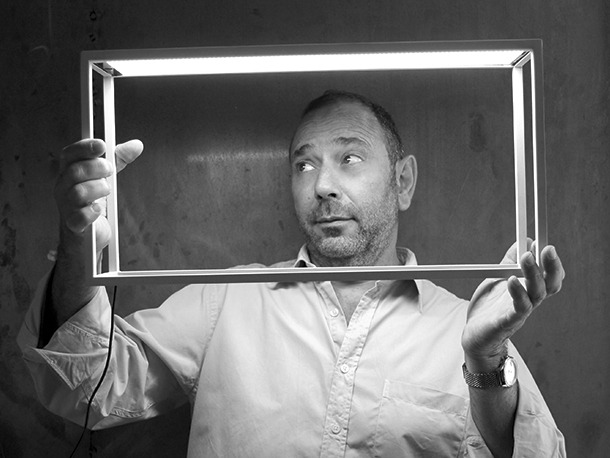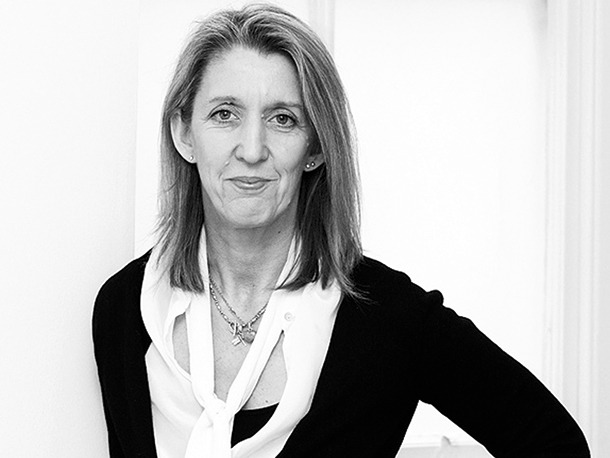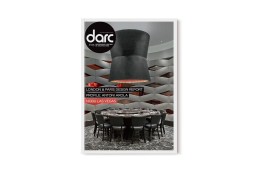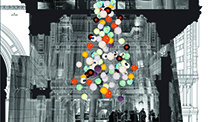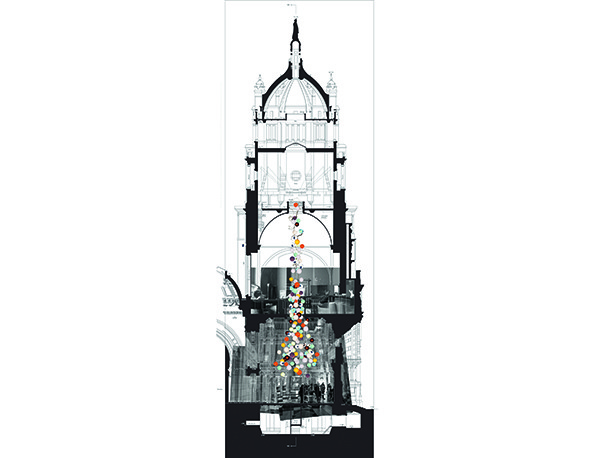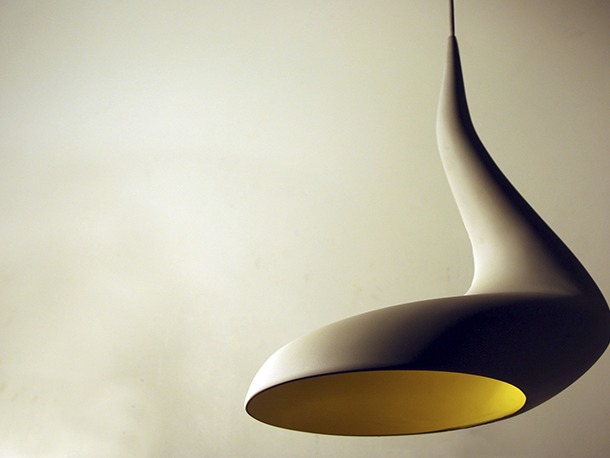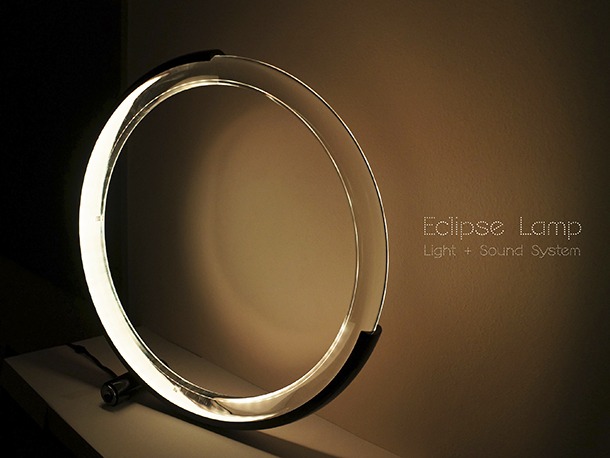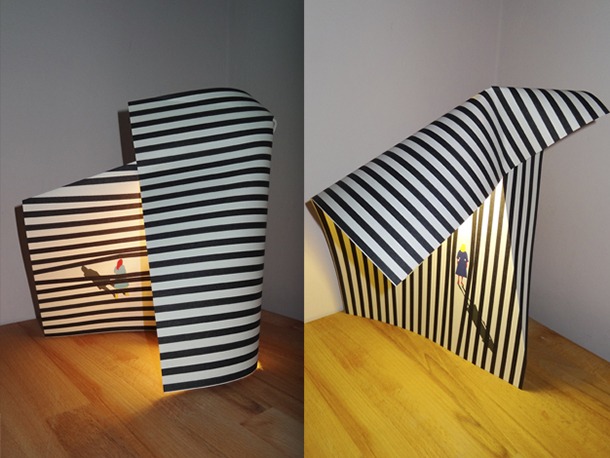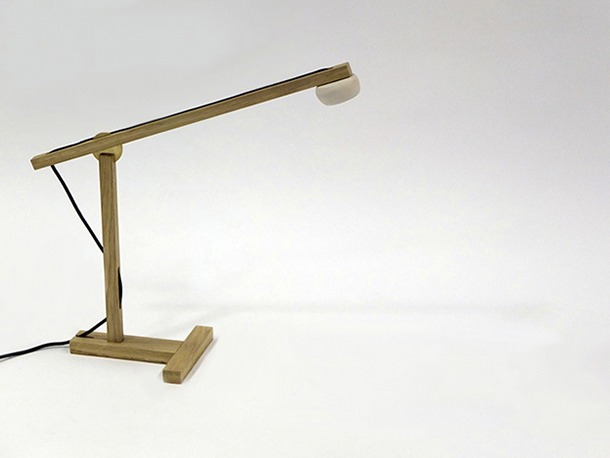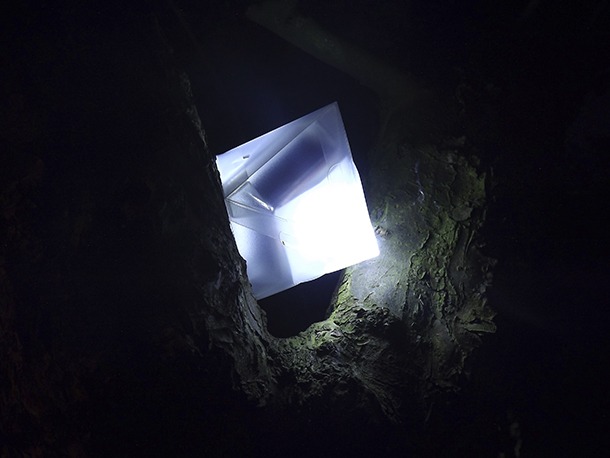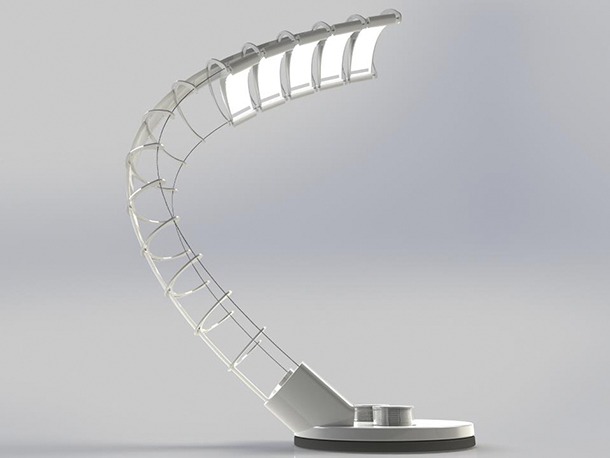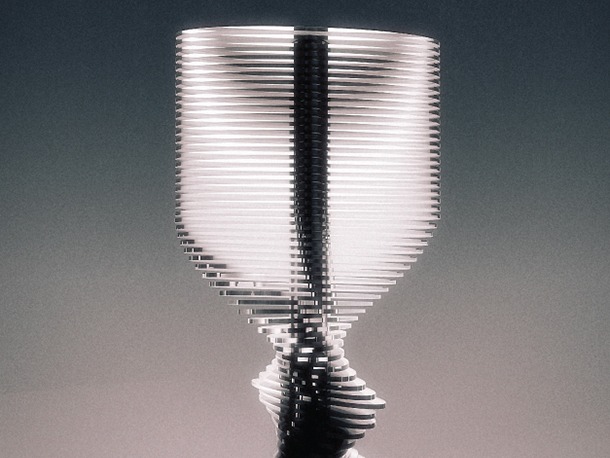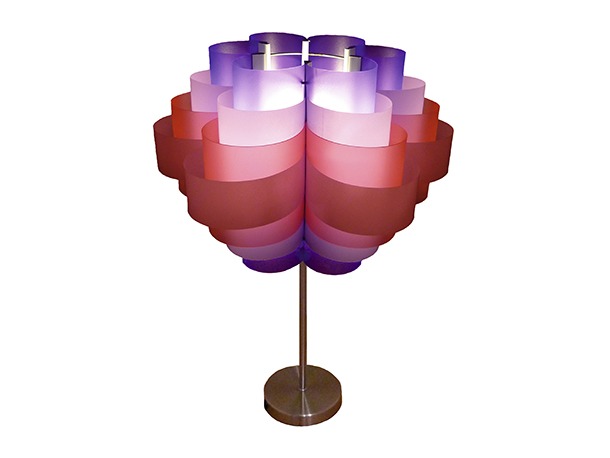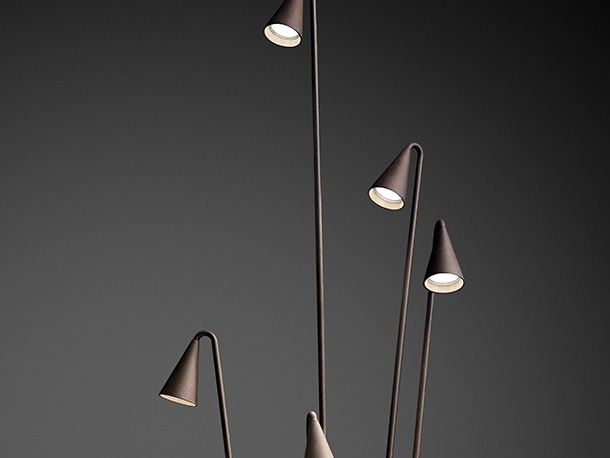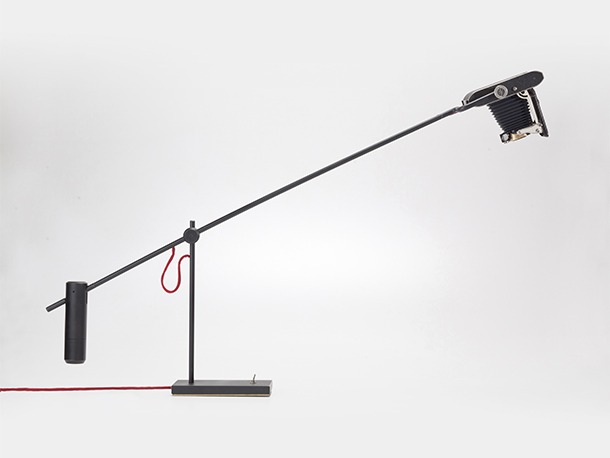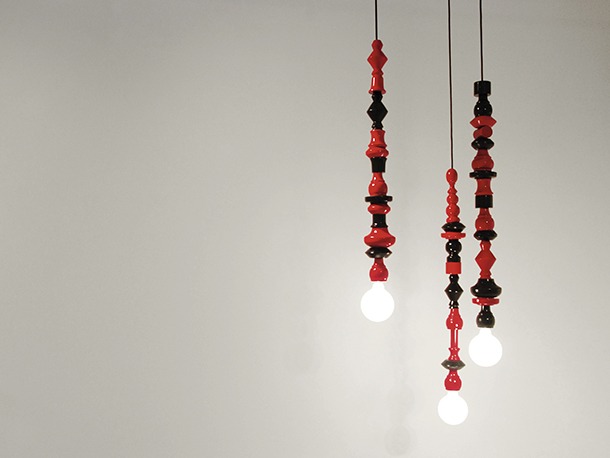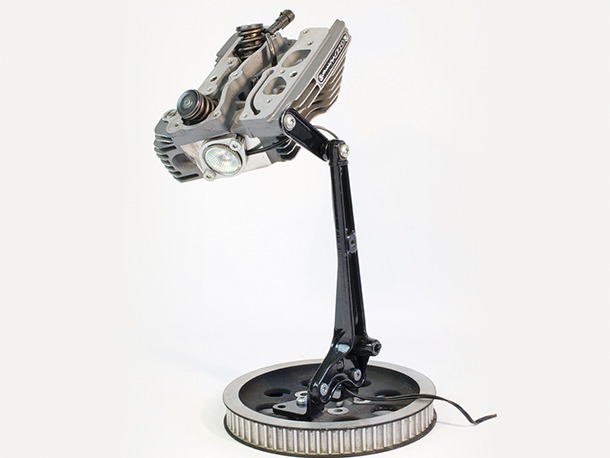Profile: Antoni Arola
Tucked away in the Poble Nou district of Barcelona, a two-storey freight-elevator ride above street level, the studio of Antoni Arola is a trove of visual stimulation. All around, a menagerie of found objects huddle neatly on shelves and in cubby holes - a rubber ball, a child’s toy, a seed pod, a mechanical part - an eclectic mix of items pocketed by Arola during his travels around the world.
Models and prototypes of light pieces also punctuate the room, the early echoes of lamps and pendants made familiar by countless interiors. In many ways these too are ‘found’ objects, forms that have been carefully coaxed into existence by Arola in his role as both creative driver and conductor.
Sitting at his desk in one corner of the studio, the designer talks in his native Spanish about the elusive process of bringing a design into being. To find a good solution, he says, sometimes the most important thing is to forget there is a problem. This is where his library of objects plays a role: items that might not in themselves provide any direct solution can often act as the catalyst for a new set of thoughts, taking the designer down a new avenue of investigation. It isn’t a collection of objects, he says, rather it is a collection of ideas, a database.
Arola’s career began in 1984. Following his studies at the Escuela Superior de Diseño Eina, he started working at Estudio Lievore y Pensi before moving on to Associate Designers in 1990. Four years later, he established his own design practice Estudi Arola and has since worked in a variety of fields, including furniture, interior architecture and lighting design among others. In 2003, his body of work earned him the Spanish National Design Prize, the jury citing his “great consistency, originality and passion.”
Over the years he has produced light pieces for the likes of Viabizzuno, MetalArte and most notably Santa & Cole, the Barcelona-based ‘editors’ of design who, in 1997, helped bring Arola’s first lighting piece, the Nimba, to completion.
Nimba started life almost by accident. Arola was playing with a linear illumination system intended for architectural lighting applications when the idea of suspending it as a hoop came to the fore. By adding an opaque diffuser the ring of light sources became a soft halo. Its technical development was very long and complex, remembers Arola, but the tenacity and instincts of Jordi Mirlbell, then editor at Santa & Cole, saved it from the rubbish heap. It was the beginning of a long fruitful collaboration that continues to this day.
Light, Arola says, is the most interesting of materials to work with. Its ubiquitous role as the provider of life, and the very means by which we engage with visual design itself, makes it wondrous. The physical materials used in the creation of a lamp are allies with which to tame the light, not to dominate it, but to domesticate it.
Changes in technology have opened up a new paradigm in lighting design. Instead of working around a single point source, and relying on material structures to harness the light’s best qualities, LEDs have allowed the designer a new freedom. In the case of the 2012 BlancoWhite series for example, Arola approached Santa & Cole with the idea of working with LED. BlancoWhite is now an extensive family of lamps that share the same subtle, one-centimetre thick structure that houses the LED light source. The pieces have a lightness of form that would previously have been impossible.
A lamp has to be something in its own right, like a person, Arola says. And when a design is like this it can go in a neoclassical or extremely modern setting, or indeed anywhere; it always endures.
In 2007, an exhibition of his lighting pieces went on tour across Europe to mark ten years since the launch of the Nimba. Now well in to his second decade, does he ever get the urge to revisit old pieces, to tweak his designs, to amend some elements?
Every day, he replies wistfully. But in this area he heeds to the advice of artist Joan Miró, another great Barcelonan: “To start a painting is really easy. The difficult part is knowing when to stop.”
The Festival Spirit
Lucio Longoni, lighting buyer for London’s iconic Heal’s store, begins our coverage of London and Paris, with his professional perspective on the international festival scene and favourite encounters from the London shows.
As a lighting buyer, international design festivals are hugely important. Most brands will save their major launches for events like Euroluce in Milan and Maison et Objet in Paris, taking on vast stands and going to great lengths to impress the visitors who come from all over the world to take part. As one of those visitors, it’s fantastic. You can feed off what everybody’s doing and it really helps you to assess trends, not just based on what you see, but also the conversations you have on stands and at parties; talking to people and finding out what they’re doing next.
In terms of current trends, I think it’s safe to say that copper continues to be important. It’s been around for a long time now - Tom Dixon started it - but I think lighting trends, unlike many homewares, have a much slower cycle. Copper is reaching its peak now and there are still loads of really amazing, new, up-and-coming designers who are finding it a really beautiful material, wanting to play with it and using it in new designs. It also feeds into, and complements, the ‘industrial’ look. Brass, filament bulbs or anything with an industrial or vintage look is key right now. Pastels were around in 2012, but again, we saw even more this year – especially in lighting - and I think that will carry on through the next twelve months.
At Heal’s we see ourselves at the forefront of these trends, so we have many collections that are new to market, whether it’s new designs or new collaborations, often doing them in a beautiful, capsule way right at the start of the trend and then bringing in more commercial pieces as it peaks. When it comes to shows, Euroluce every two years is of course the main event internationally, and at Maison et Objet there are some nice things to be found – more so in January than September - but for Heal’s as a UK store, London Design Festival is particularly important.
The Festival was non-stop for us this year. We held a big party to mark the re-launch of our lighting department on the Wednesday evening, but either side of that, I just went to as many shows and events as possible. It’s exhausting, but hugely valuable; Heal’s is a British design company and although international brands have played an important role throughout our history (hosting Italian and Scandinavian Design Festivals in the 1950s and holding in-store events to mark the first-to-market UK launches for many international designers), the thing that’s always run through the collection at Heal’s is ‘British Designed and Made’.
Tent was particularly fruitful for new talent: people that had just set up their own business with husbands or wives; recent graduates on their own; or two brothers collaborating; I met a lot of people from different situations who just wanted to have a go and really get involved in design and start their own business. I think Tent and Designjunction were the perfect places to do that – and that’s certainly what we were looking for at Heal’s – or what I was looking for in lighting. It was good, again, to see the trends - because in a London festival, you’re more likely to see the trends that are going to appeal to the English market.
There were a few brands in particular that stood out this year. International Studio and Dyke and Dean were amongst my favourites at Designjunction. They’ll both be coming to Heal’s in January as exclusives for six months. We’re going to replicate the pick-and-mix assortments of both brands in our lighting departments. I think that aspect of mass personalisation is very important at the moment and will be for some time. The collections allow customers to put elements together and make it their own. People love having their own story element to buying a product, something they can tell friends or family about, or a talking point at dinner parties.
I’m a massive fan of Rothschild & Bickers, who were also at Designjunction. Their new lighting was fantastic and one of their new pieces, the Standing Pendant will be exclusive to Heal’s next year.
I saw a lot of interesting people at Tent, including Obe & Co, David Derksen and Alexandra Raben - a fantastic girl from Norway who had woven wool shades using big metal structures as their bases - very expensive, but amazing and very different. It was just one example of the many pieces coming through with that craft aspect, and in many ways I think those were some of the real highlights; just to know that people were getting involved with making, and weren’t afraid to go into making craft and still present it in a commercial and modern way.
Lucio Longoni, is Lighting Buyer for Heal’s. www.heals.co.uk
Click here for more on Heal’s new lighting department, including details of the new Bocci chandelier on the store’s historic Cecil Brewer staircase.
folio: Richmond International
Richmond International provides a bespoke service responding to each brief’s individual requirements. With more than 45 years experience, the London-based company not only creates brilliant new and refurbished buildings, it also takes into consideration the economic and social impact of their work on the immediate environment.
Richmond International’s clients include a broad cross-section of individuals, institutions, developers, banks and hotel companies. Indeed their perview is not restricted to terra firma; the group recently completed the Lotus Spa on board the Royal Princess, the latest addition to the Princess Cruises fleet.
Above all the practice specialises in hospitality design and has been involved in the creation and/or refurbishment of many of the world’s landmark hotels including The Langham Hotels in Chicago and London; the Four Seasons Hotels in Amman, Mauritius, Hampshire; and the award-winning Four Seasons Gresham Palace in Budapest.
www.richint.com
Four Seasons Gresham Palace
Budapest, Hungary
The falling of the Iron Curtain in Eastern Europe revealed many surprises, not least the Gresham Palace, a 1906 Secessionist masterpiece that had lain derelict after decades of neglect and decay. Richmond undertook what became an award-winning restoration, bringing in master craftsmen to sensitively recreate the former glory of this stunning World Heritage landmark. The focal point of the main lobby was a piece manufactured by Preciosa. Inspired by decorative jewellery pieces from the secessionist period at the turn of the century, this chandelier comprises hand shaped crystal leaves, each approximately 60cm in length, illuminated by the 76 halogen bulbs that sit among them.
Langham Chicago
Chicago, USA
Continuing their long-standing relationship with the luxury Langham Hotel Group, Richmond recently completed the brand’s third US-based hotel in Chicago, Illinois. Originally designed as offices, the project involved the refurbishment of floors two to thirteen of the 52-storey, iconic Mies van der Rohe-designed tower. Richmond’s design challenge was to create a series of interiors in character with Langham’s traditional design sensibility, yet set in an iconic mid-century modern building. The team was able to cut new spaces into the Miesian plan to create double height ceilings throughout the main public spaces to allow the light and the cityscapes to become part of the interior architecture. For the main lobby area of the hotel Richmond worked with Jana Ruzickova and Tomas Hovorka, in-house designers at Czech manufacturer Lasvit, to create a bespoke chandelier piece. The installation is comprised of hand-blown glass pebbles in two sets of colours, which are suspended at varying distances and lit from above with LEDs. The bubble-like pebbles are each unique in shape and internally coated in liquid metal, a visual reference to the Chicago River, which flows past the hotel’s south side.
Four Seasons Baku
Baku, Azerbaijan
Positioned prominently on the Caspian waterfront promenade, the Four Seasons Hotel, Baku, Azerbaijan is the Group’s latest European hotel. Taking inspiration from the French Riviera, Richmond created sumptuous interiors that merge the French Beaux-Arts style with contemporary twists, resulting in an environment finished to the highest quality. Richmond worked with UK-based Dernier & Hamlyn to create a number of bespoke lighting pieces, including three crystal and polished brass chandeliers for the hotel’s rooftop restaurant Kaspia. Based on the concept of ‘fire and ice’ and complementing the restaurants undulating views of the Caspian sea, the fittings include sail-like chrome plated panels and solid acrylic cubes that reflect the light in a similar way to water. Elsewhere, for the hotel’s private dining room, a single 40m piece of brass was strip rolled and heated to allow it to be coiled into a 1.5m high cage.
Trianon Palace
Versailles, France
Famously one of King Louis XIV’s original royal pleasure palaces, Trianon and its extensive gardens in Versailles were commissioned by the King as a woodland retreat far removed from the strict etiquette of the Royal Court in Paris. Over the centuries Versailles has witnessed many residents and transformations: from Marie Antoinette and Napoléon, to the upheaval of the French revolution. The Trianon Palace, built at the turn of the last century, is universally acclaimed as one of France’s finest luxury hotels, famed for its redefined decadence and home to Gordon Ramsay’s first French venture. Richmond’s respectfully restrained approach was employed to give the hotel its latest ‘chic countryside retreat’ aesthetic. From their first glimpse of the main lobby and gallery space, visitors are left in no doubt of the experience ahead. A series of chandeliers, inspired by the drawings displayed at the Paris Grand Exhibition of 1938, hang throughout the space. Each is created from woven Murano glass that fades from light to dark through the length of the fitting.
Grand Hotel Stockholm
Stockholm, Sweden
The Grand Hôtel - overlooking the Royal Palace and Gamla Stan, Stockholm’s old town - has been home to celebrities, high-profile events and everyday bon-vivants since 1874. It is also the location of the classic Swedish Veranda restaurant, renowned for its traditional smörgåsbord, Mathias Dahlgren’s Michelin star restaurants and the spectacular Cadier Bar. Richmond designed a series of light fittings that were not only a contemporary interpretation of the hotel’s original chandeliers, but also made by the local manufacturer Tomas Kerbs, whose father produced the original fittings. It is a link to the past that gives the space and its new look an added layer of historic integrity.
ISSUE FIVE
INSIDE ISSUE #05:
Jamie’s Trattoria • London //
PF CHANG’s • Laval //
John Lewis • London //
NeueHouse • New York //
Nobu Hotel Restaurant & Lounge • Las Vegas //
Profile: Antoni Arola //
Folio: Richmond International //
Comment: The Festival Spirit //
Maison et Objet //
Now! le Off //
100% Design //
Designjunction //
Tent //
If...
Get some Sleep
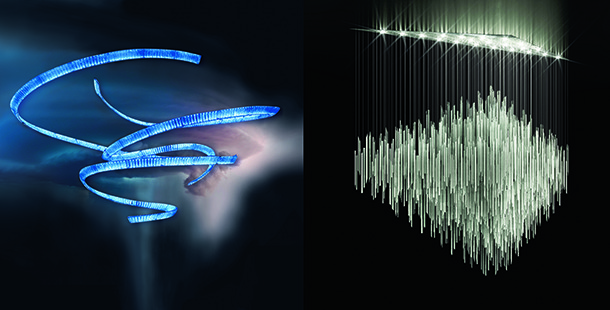
Sleep, Europe’s leading hotel design and development event comprising an Exhibition, Conference, Round Tables and Sleep Hotel, the built room-set challenge which this year taps into the Pop Art zeitgeist - returns this November. This eagerly awaited highlight in the annual calendars of designers, architects, owners and operators is probably never more anticipated than this year; not least for its exploration of the latest developments in lighting design it is promising.
Contemporary lighting will be under the spotlight at the Sleep Conference in a session moderated by Kevin Theobald of GIA Equation on Wednesday 20th November at 12:50pm, where he will be joined by lighting design experts Paul Nulty, Johannes Torpe and Paul Traynor to explore how technology and creativity are driving forward inspirational lighting design in hospitality environments.
The exhibition sees lighting manufacturers from across the UK and Europe revealing new product ranges. Well-known names this year include Astro Lighting, Baulmann Leuchten, Heathfield & Company, Leucos Group and Vaughan Ltd. Will Chelsom, director of lighting specialist Chelsom, and a Sleep exhibitor for the past seven years sums up its appeal: “Sleep has a great reputation amongst our client base and you can always rely on top quality people from within the industry attending. It’s very aesthetically attractive and there are always some new and inspirational products on display.” Amongst first time exhibitors are Decode London, who will be showcasing their uber-contemporary lights as part of a Newcomers Gallery within the exhibition.
Two striking lighting installations are set to create visual drama in the Sleep arena - Lasvit’s Bamboo in hand-blown crystal glass tubes exquisitely sculpted to suggest woody bamboo stems will preside over the main entrance, while Preciosa Lighting has designed a breathtaking piece which will ‘float’ above the main hall. Hurricane of Inspiration combines 4,000 crystals with RGB LED lighting to create a 38-metre spiralling form.
A late night opening until 8pm on 20th November with complimentary drinks available throughout the exhibition hall and at the Sleep Hotel Bar will serve to heighten even further the networking opportunities for everyone, participants and visitors alike.
For full exhibition and conference details and information on how to register, visit the Sleep website.
SLEEP AT A GLANCE:
• The European Hotel Design Awards dinner – Tuesday 19th November, Park Plaza, Westminster Bridge, London.
• Sleep exhibition, conference and Sleep Hotel – Wednesday 20th & Thursday 21st November, Business Design Centre Islington, London N1. Open from 10am-8pm on the 20th and 10am-6pm on 21st Nov. Pre-register for a complimentary ticket at www.thesleepevent.com.
• Sleep Hotel Award 2013 – 7.00 pm Wednesday 20th November at the Business Design Centre
Bocci create glass piece for V&A
Canadian designers Bocci will be unveiling a lighting installation at London Design Festival's hub venue, the Victoria & Albert Museum.
Entitled 28.280 and designed by Omer Arbel, the installation will fill the museum's main atrium with a special composition of the company's '28' light pieces.
The 30-metre tall piece aims to present a celebration of both the V&A's monumental structure and the powerful art of glass blowing.
Finalists announced for Delight in Light competition
The ten finalists of this year’s Delight in Light student design competition have been revealed ahead of the final round of judging, to take place at 100% Design.
The competition, held in partnership with The Lighting Industry Association, aims to promote good lighting design. The final ten designs, selected by online vote from over 70 entrants, will go on show during 100% Design (18-21 September at Earls Court). Visitors to the show will be able to vote for their favourite design, with the top four going forward to the final on 21 September.
The judging panel comprises: Simon Terry, Innovation & Brand Director at Anglepoise; Alexander Taylor, Director of Alexander Taylor Studio; Peter Hunt, Chief Operating Officer at The Lighting Industry Association; and Oliver Hrubiak, Director of Oliver Hrubiak Design.
The finalists:
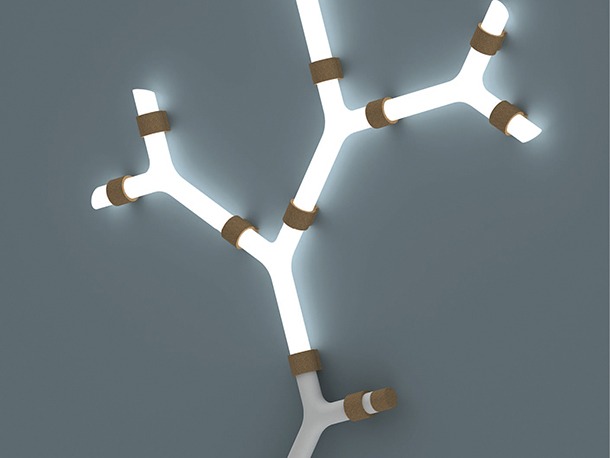
BRANCH Lighting System by Peter Larkam
Light Design by Stuart Featherstone
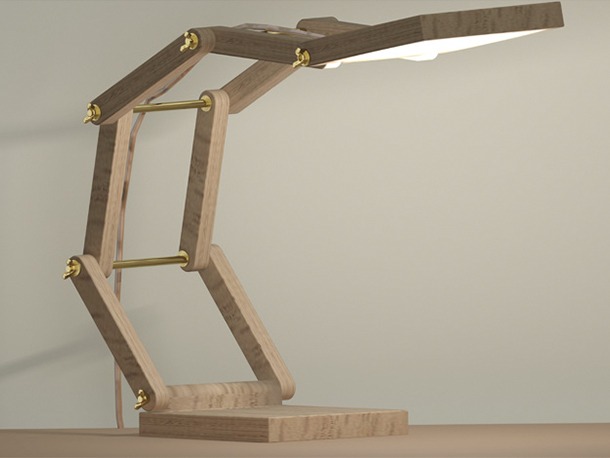
Oakii Lamp by Kate Caven
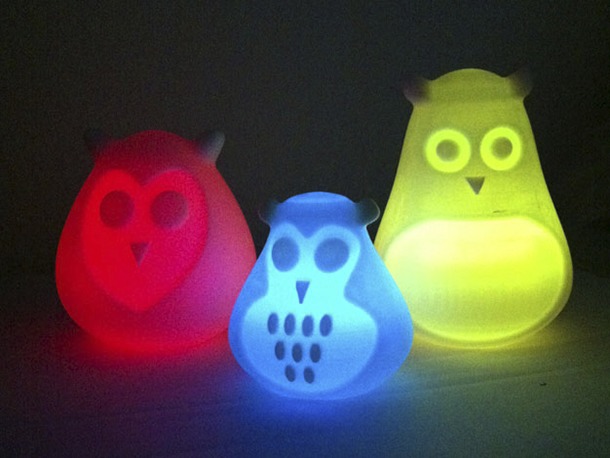
The Night Guardians by Ashleigh Cleet
Daisy
Daisy from award winning eco artist and designer Sarah Turner is handmade from waste two-litre drinking bottles. After cleaning and sandblasting, the bottles are hand cut and trimmed to different lengths. Each decorative piece is then formed around the lampshade rings in a funky retro style.
Brisa
Brisa is part of Vibia’s new Outdoor Collection designed by Lievore Altherr Molina. Its sleek silhouette blends with flora during the day and provides a beam of intense yet warm light, accenting those surfaces that require higher levels of illumination. Available in khaki or matt oxide lacquer.
Re-Born Lighting
Y-Studio aims to celebrate the products that are often considered as outdated. They organise and rebuild these products so they have a place in modern times, reusing old products in a way that they will give them a new stylish aesthetic. They have redesigned the film camera into a modern lamp.
Incomplete Lighting
Part of Eunhak Kim’s drive for purity over ostentatious design, Incomplete Lighting was designed to have no fixed shape. The user can create their own lighting shape by threading various combinations of wooden beads, encouraging a line of communication between the designer and user.
Evo Light
Cruisin’ Design is an emerging multidisciplinary creative design team, primarily focused on unique designs made from upcycled used vehicle parts (including bits from motorcycles, cars, industrial vehicles and more). Evo Light was designed by Ray Riley following these principles.


